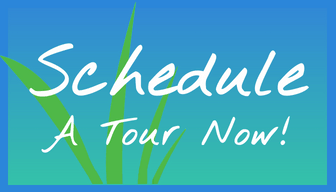Working with Children with Special Needs, Learning Delays and Neurological Challenges
– by Josie Davenport, LMT LCSW
Introduction
One of the many things that I love about being a massage therapist is the vast array of specialty areas that are possible with my license to touch. I have deeply explored connective tissue therapy, therapeutic communication, cranio-sacral therapy, injury evaluation and treatment, and Feldenkrais® movement with awareness. Fifteen years into my profession I began to discover the joy of working with children with special needs. The Anat Baniel Method for Children℠ gave me more confidence and skill for helping children learn to build movement options. It was the first child that caught my eye with a look of total connection and excitement for learning that got me hooked. I knew that I had found my love, my path. I was actually able to help children learn to move in new ways and that child’s look touched my heart.
I work with families who have been told by the medical community, “Your child will never . . .” sit on their own, crawl, walk, go to college – fill in the blank. And yet, I see children move joyfully beyond such limits every day. There is quite a lot that I teach parents right away in the context of the child’s lesson with me. Of course a full training program would be best and I do recommend Anat Baniel’s training. In addition, when I work with parents and their children there are many things that I can teach them so that they can continue to facilitate learning for their child.
Safety and Connection
The first thing to establish in a lesson for a child is safety. Greeting them directly, talking to them with respect and looking for opportunities to be light and playful are key ways to establish rapport. Of course, it’s important to match them too. If a child is frightened, averting eye contact, I will back off my gaze and calm myself, slowing down as a way to help calm them. I ask the parent to bring a comfort item, I may also see if they are interested in a quiet toy. I often work with small children while they are in their parent’s lap. Showing interested in them and being authentic, being completely present and engaged, I look for easy ways to make contact. If the parent puts the child on the table, I ask them to stay close so that the child remains safe. Once the child starts to interact with me, I can make more contact.
Staying With What Is
One of the first things that I can teach a child or adult is that the table is supporting them fully and they can let go of unnecessary holding. I teach this by helping them do the holding. This brings awareness and can lead to learning.
• Taking over – Take over their holding and wait, then stop, wait, and taking over again. For example, if they hold their shoulders up, help them do that.
• Exaggeration – Do the holding for them a tiny bit stronger than they are, let go gradually, try to feel them letting go as you do.
• Grounding – As they lie on their back, place a small amount of equal pressure on their shoulders until you feel the ground a little bit through their bones. Then press slowly down their arms, place a small equal amount of pressure on the two sides of the pelvis and down the legs. As they lie on their side, press gently the shoulder girdle and pelvis at the same time.
• Undoing Muscles Spasms – Stretching can be painful for anyone, especially children with special needs. When a muscle is hard and contracted, one alternative is to first slacken the muscle by taking the two ends closer together and helping it to soften using massage. When you feel the muscle soften, then very slowly bring the two ends apart so that the muscle remains soft. Getting the bigger picture can do the most for alleviating contractions in general. When key areas in the trunk are allowed to move, the limbs and smaller areas don’t have to work so hard.
Finding Landmarks – Painting the Brain/Body Image
To help someone feel the bumps of their bones and those relationships to each other can be very soothing and interesting. For the brain, though, this information helps to create the self- image. The more information the better when presented in an organized way. There is that static topography that changes according to position. There are connections and relationships between positions. And there is the exciting potential of the movement of several points in space. Function brings those points into an organized understanding, helping the brain map those points in relation to reaching, looking, rolling, feeding, crawling, sitting and so on.
Slow, Small, Gentle
When a movement is difficult to do, slowing down increases sensitivity and attention and decreases fear and anxiety. Also, in order to find a way to do the desired thing, playful experimentation is exactly what the brain needs. Play, laughter, and a ‘no big deal’ attitude are perfect components for discovery. Children and adults learn new things best by feeling from the inside, not by performing for others and ‘doing it right’ from the beginning. Making mistakes gives the brain information and when this is done playfully and gently, then the learning is not associated with difficulty and pushing.
The Brain Thrives on Random Movement
The final guideline for now is to give a child plenty of free unstructured playtime on the floor in a safe area of the home. This can be in earshot and visual sight of the kitchen or any area where the parent spends a lot of time. Give the child room to flail and kick and move in any way that they can. All healthy babies do this and children who have difficulty moving need this. Don’t place a baby in any position that impedes movement or in a position that they cannot get out of easily on their own. Try finding toys that respond to the smallest touch. A good example is the “Happy Apple” which can be found online. Also, some parents make a square area, called a “little room” so that the baby who does not yet roll can kick something or come into contact with small toys with their hands.
Of course there is much more, but this is the foundation to help foster intelligent options for movement and awareness. Please know that the above ideas come from my own experience and understanding. Much of the above is influenced by my training with the Anat Baniel Method℠.
I hope that this article has given parents some ideas for handling their child at home between Anat Baniel Method for Children℠ lessons. I also hope to give future massage therapists information about one of the possible pathways that they can follow when they have a massage therapy license. Parents who wish to train with Anat Baniel need a license to touch. For parents of children who have special needs and learning delays and who choose to attend the Florida School of Massage as a first step in becoming an ABM practitioner, I will give your child under 3 years complimentary ABM lessons as long as you are enrolled at FSM. For children over 3 years, I will decide how much I can help, based on my assessment prior to enrollment in the school. The Florida School of Massage is known internationally for excellence. Our emphasis on awareness and personal transformation is a perfect prelude to further training with Anat Baniel.





